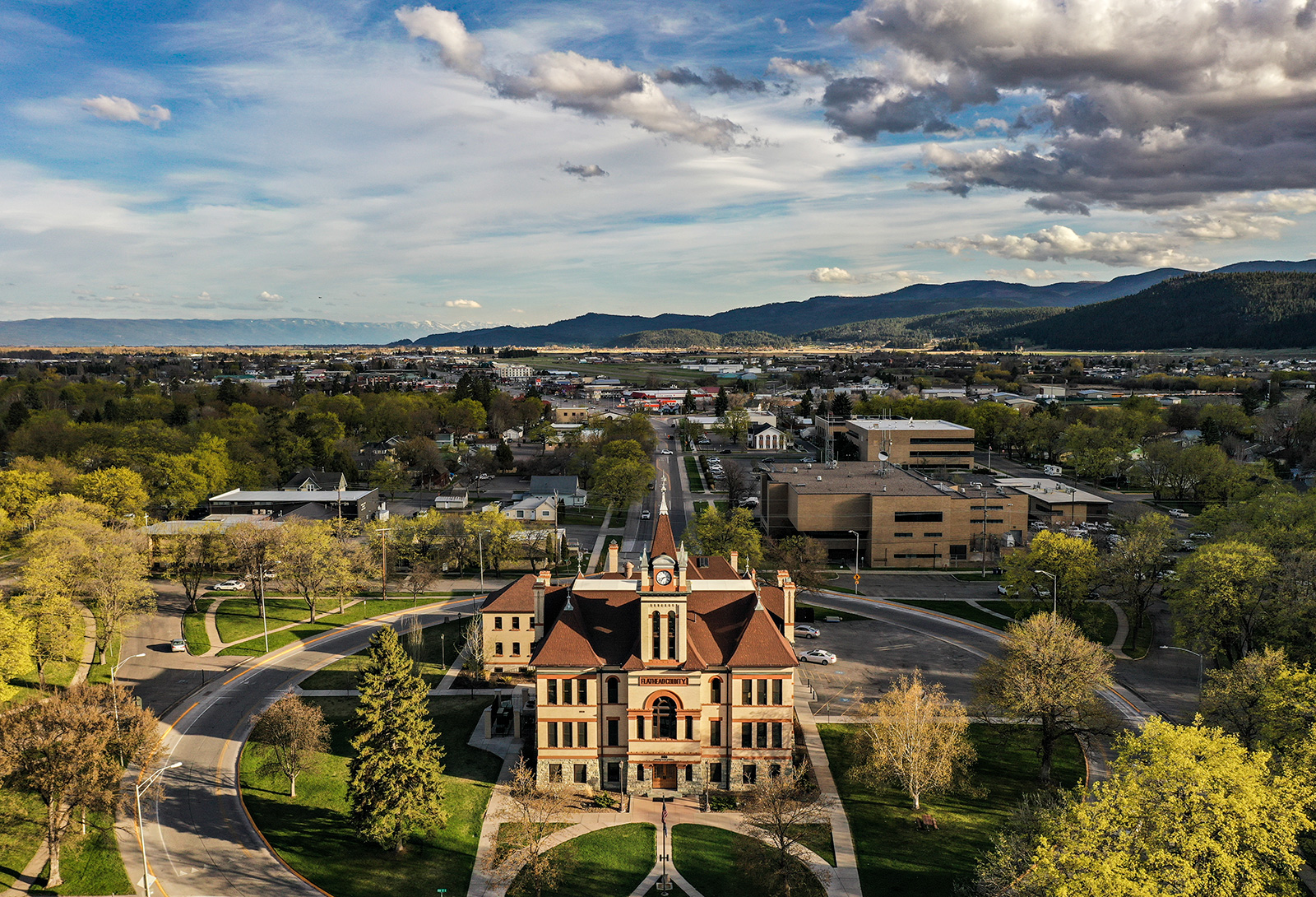County Commissioners ‘Hold the Line’ on 2024 Budget
Flathead County Commission unanimously voted for $115.8 budget, marking a spending decrease compared to last year
By Micah Drew
The Flathead County Commission at its Aug. 31 meeting unanimously approved a $115.8 million budget for the next fiscal year, with commissioners touting the financial plan’s investments in community services — including future upgrades to the library and the jail — despite an overall reduction in spending compared to last year.
The approved budget cuts county spending by 2.11% from fiscal year 2023, despite a $2.8 million increase in actual tax collection from county taxpayers.
According to new valuation numbers released by the Montana Department of Revenue, the total taxable value for the county increased 46%, up to $498 million; however, the county will levy just 103.34 mills, a 28.17% reduction from last year. The actual total property tax figure for the county increased to $48.4 million, a $2.8 million jump. Nearly half of that increase can be attributed to newly added properties, according to County Administrator Pete Melnick.
“These new dwellings and neighbors not only contribute to the general welfare of Flathead County, they also ease the overall tax burden for all residents,” Melnick wrote in a memo he read to the commissioners.
Melnick’s budget letter pointed out that for the fourth year in a row, the county is not currently levying taxes to the maximum limit permitted by tax authority guidelines, which would allow for an additional 5.47 mills to be taxed. The total uncollected taxes amount to $2.7 million left for county taxpayers.
“Let’s acknowledge the reality,” Melnick said. “There are very few governments that can confidently make such a statement.”
Assuming no change to taxable value for a property, the current budget is expected to decrease taxpayer bills by $54.70 for every $100,000 in market value property.
The county’s total expenditures for fiscal year 2024 is more than $10 million lower than was initially proposed to the county commission in June. The decrease is due to roughly $10 million in American Rescue Plan Act (ARPA) funds the county received for water and sewer-related projects, including a future regional septage facility, but that funding hasn’t been specifically allocated yet.
Flathead County Commissioner Randy Brodehl said minimizing spending at the local level sets the Flathead apart from other Montana counties, and championed the work of county administrators.
“I just want to point out that from 9 a.m. to 9:30, we have three public hearings on the budget, but the reality is it’s not a half-hour budget, it’s a year-round budget, and it’s the heart and soul of our finance department,” Brodehl said. “I think this budget really reflects who the Flathead is.”
A large portion of the expenditure budget includes $12.3 million for the capital improvement program (CIP), a slight decrease from the previous year. The 2024 CIP budget allocates $896,950 for culture and recreation, $88,000 for public health, $3.6 million for public safety, $4.2 million for public works, $1.2 million for general government, $357,234 for social and economic services and $2 million for solid waste.
In his budget memo, Melnick highlighted several CIP projects, including $250,000 set aside for a future replacement of the ImagineIF Libraries Kalispell branch, the first time the county has specifically committed funds towards a new library project since 2019, when ImagineIF’s CIP projects were stripped from the budget.
The commissioners also approved a major $2.5 million investment towards a future replacement of the county’s detention center and allocated $50,000 for upgrades to Conrad Field.
“As we continue to address community needs, we also recognize the call for investments in key physical infrastructure that keep our county moving forward,” Melnick said. “Collectively these investments will make our county and region stronger for years to come.”
Melnick also highlighted additional investments to the Flathead County Attorney’s Office, including two deputy county attorney positions and a 5% pay increase for those positions. The county attorney’s office remains understaffed, despite a countywide vacancy rate of 6%, half of what it was just two years ago.
The county’s 557 full-time equivalent (FTE) employees make up another major portion of the budget. Personnel costs for the year include a 4% cost of living adjustment passed in May, longevity funding and step increases in compliance with county policies and union contracts.
Melnick added in his report to the commissioners that the county continues to maintain adequate cash balances with projected reserve funds of $20.3 million at the end of the fiscal year.
“We are such a family here, that’s how I look at it, we all pitch in when needed and we have great staff and great department heads all throughout our county,” commissioner Pam Holmquist said. “I want to thank them for holding the line like we ask them to do. I think the citizens out there can be proud of what they have here.”